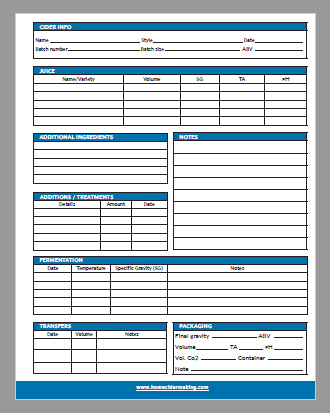Whether you are making a one-gallon batch or a 100-gallon batch, you will enjoy making cider more with the right equipment for your needs. Below I will talk about different sizes, materials, costs and of course the best ways to improvise.
The most basic pieces of equipment required for making hard cider are the fermentor, an airlock, a siphoning hose and some sort of bottling solution. Of course, if you plan to press your own apples you will need a way to extract the juice such as a cider press.
To craft more complex recipes or make calculated experiments, some extra tools will be necessary such as a hydrometer to calculate the potential alcohol or a PH testing kit to measure acidity levels.
Basic Cider Making Equipment
Cider Press:
Pressing cider is a lot of work and a task that few traditional vegetable juicers will survive. To produce one gallon of cider it will require about 15 pounds of apples! Do yourself a favor and either buy a press or have a local orchard press your apples for you. A home size cider press is easy to use and will provide much better results than an electric juicer.
Fermenting Vessel:
A fermentor is the main vessel where fermentation happens, no surprise, right? The apple juice is poured in, yeast is added and the magic happens. A glass fermentor, called a carboy, comes in many sizes with the most popular being one to six gallons of capacity.
Plastic fermenting buckets that made from food-safe plastic are also very popular. They are cheaper, easier to clean and won’t break if they are dropped. Some plastic fermenters also come with a spigot which is very convenient when bottling cider.
Airlock:
An airlock is a simple yet essential piece of equipment for fermenting hard cider or any other alcohol. The airlock is placed in the opening of the fermentor and allows for the gasses created during fermentation (CO2) to escape while keeping contamination such as mold or bugs out.
Hydrometer:
The hydrometer measures “specific gravity” which tells a cider maker the amount of dissolved solids in a liquid. For cider, the hydrometer allows us to measure the sugar content. With this sugar content measurement, the potential and final alcohol percentage can be determined. A hydrometer is essential when trying to reach a certain potential ABV for a recipe or measuring the completion of fermentation. The hydrometer I use measures specific gravity, Brix and has a potential alcohol scale all in one.
Auto Siphon and Hose:
A siphon is a simple yet extremely useful tool that allows us to “rack”, or transfer, the cider from one fermentor to another or to bottles. The siphon allows us to drain the cider without stirring up the sediment on the bottom of the fermentor which will help achieve a clear finished cider.
Cleaner and Sanitizer:
A good no-rinse cleaner and sanitizer will not only guarantee a clean equipment but will save lots of time. Soaps can leave residues and rinsing can potentially re-contaminate your equipment. It’s a must for a clean and safe ferment.
Bottling Solutions:
The way you chose to bottle your cider depends on personal preference. Do you like a carbonated or still cider? Small or large? I prefer to carbonate my cider and like to use 1/2 gallon screw top growlers . If I’m going to have 3 or 4 ciders, I may as well just bottle it in one big growler, right? Other solutions include reusing beer bottles (pry off style only), Grolsch style bottles or kegging. If you choose to make still cider, wine bottles work great!
Precision Cidermaking Tools & Equipment
Digital Scale:
Accurately measuring sugars, or any additive for that matter is a no brainer. One particular task that I find a scale to be very important is when measuring priming sugar. Too little and you have a flat cider, too much and your bottles explode. The small investment is worth it. Any food scale with a .1g accuracy will work, even a 1.0g accuracy will do fine in most cases. I bought my scale from Amazon for about $12 and it works great.
Acid/Ph Testing Kit:
When cider is too acidic it can taste tart while a neutral cider will taste flat and bland. Testing the cider allows us to balance the acidity and achieve controlled results. This is especially useful when using fresh pressed cider with a mix of unknown apples. This acid testing kit has clear instructions and also includes the acid blend used to make the proper adjustments to the cider.

















